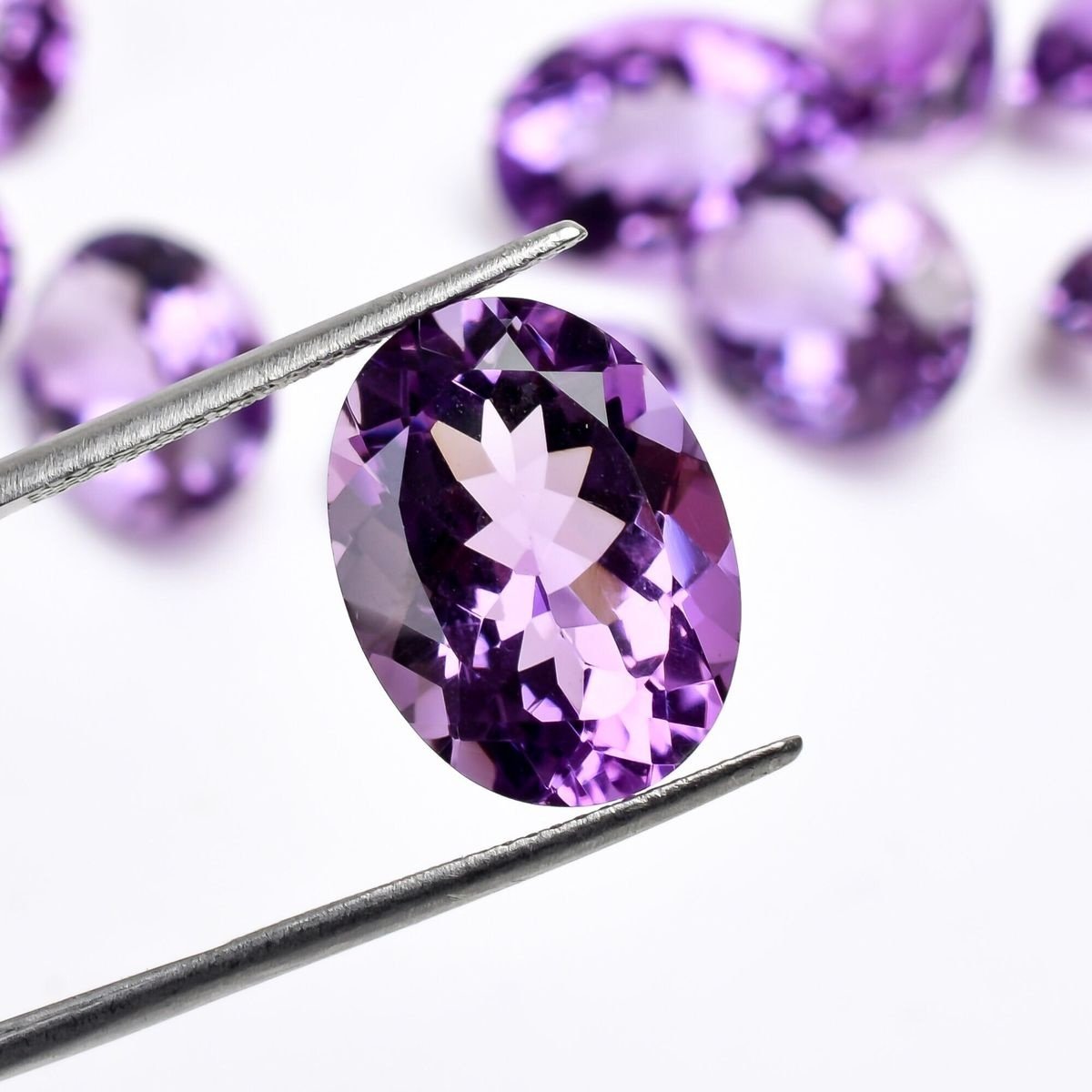Purple has always been a color that stands for mystery, luxury, and deep spirituality. Of course, gemstones that are violet or lavender also have that same appeal. This includes the well-known amethyst, the rare sugilite, and the highly sought-after purple sapphire. But when you’re looking for amethyst stones for sale, it can be hard to tell if the gem you like is really amethyst or another purple stone.
It’s important for both collectors and casual buyers to know how to tell gemstones apart because each one has its own beauty, value, and meaning. In this guide, we’ll talk about the differences between amethyst and other purple gems.
What Makes Purple Gemstones Special
People often think of purple gemstones as symbols of wisdom, royalty, and spirituality. They are connected to the crown chakra, intuition, and higher awareness in crystal healing. Kings and queens wore violet-colored jewels for hundreds of years because purple dye was hard to find and expensive, so these stones were seen as symbols of power and status.
People love purple gems today because they can look bold and dramatic in statement jewelry or subtle and elegant in delicate designs. Amethyst is the most well-known, but it’s not the only choice.
The Classic Purple Stone: Amethyst
Amethyst is a type of quartz, which often comes in shades ranging from light lilac to deep violet. This gemstone is easily available when compared to other gems in the market. Thus, you can get it at affordable prices.
How to Tell Amethyst Apart:
-
- Color: From light lavender to deep royal purple, with some crystals having zoning (lighter and darker shades within the same crystal).
- Clarity: Translucent to opaque.
- Durability: It is hard enough for everyday use, with a Mohs hardness of 7.
Some of the common cuts of this gemstone include cabochons, faceted stones, beads, and raw clusters. These stones range from polished gems that are ready to be made into jewelry to raw clusters that can be used for home decor or meditation. You can also buy moonstone online and combine it with amethyst in jewelry and healing rituals. Both stones have a calming energy for balanced healing results.
Purple Sapphire
Purple sapphire is much harder to find than amethyst and worth a lot more. Like ruby and blue sapphire, it is part of the corundum family.
What Makes It Different from Amethyst:
- Purple sapphires have a brighter color than an amethyst.
- The Mohs scale says it is 9 on the hardness scale, which makes it one of the hardest gemstones (after diamond).
- Because it is rare, it costs a lot more than amethyst.
If you’re not sure if a stone is sapphire or amethyst, its hardness and brilliance can help you tell. Sapphire is much harder than amethyst and often has a brighter sparkle.
Spinel
You might mistake purple spinel for amethyst at first glance when you buy natural gemstones online. But spinel has its own unique charm.
Main Differences:
- Colors can range from lavender to violet, with hints of pink or gray.
- It is harder than amethyst, with a hardness of 8 on the Mohs scale.
- Spinel has a higher refractive index, which makes it sparkle more than amethyst.
Amethyst is usually more see-through and has a consistent color, but spinel can look brighter and shinier when cut into facets.
Iolite
Iolite, which is sometimes called “water sapphire,” is another purple stone that people often confuse with amethyst.
Important Differences:
- Iolite can be violet-blue or grayish lavender, and it has a pleochroic effect, which means it shows different colors depending on the angle you look at it from.
- Its hardness on the Mohs scale is between 7 to 7.5, which is closest to that of an amethyst.
- What makes it special is that it has pleochroism, which amethyst does not.
It’s probably iolite and not amethyst if your gemstone changes color from blue to violet when you change the light or angle.
Sugilite
Sugilite is a purple gemstone that isn’t as well known but is very valuable. It looks darker and more opaque.
Main Differences:
- Usually not see-through, with deep magenta or reddish-purple tones.
- Its hardness is 6 to 6.5 on the Mohs scale, which is softer than amethyst.
- More solid and earthy texture than the see-through shimmer of amethyst.
Amethyst is easier to find while sugilite is rare.
Charoite
Another purple stone that could confuse people who are buying for the first time is charoite.
Main Differences:
- There are swirling patterns of lavender, violet, and lilac with a pearl-like shine.
- Its hardness ranges between 5 to 6 on the Mohs scale.
- It has more inclusions and patterns than the smooth, clear look of amethyst.
If your stone has complicated swirls or a silky sheen, it is more likely to be charoite than amethyst.
The Final Words
So the next time you look at an amethyst, pay close attention to its color, hardness, and clarity. However, if you’re looking for other purple stones, we’d suggest sapphire, charoite, and moonstone as well. No matter what, you will be adding a gemstone that reflects a timeless beauty.
